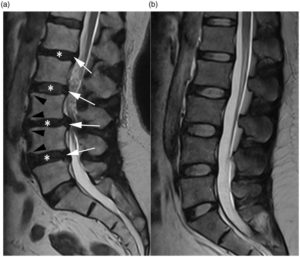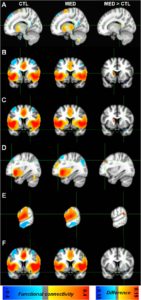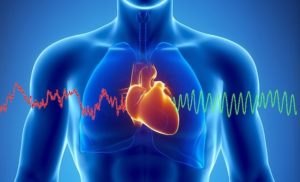Reduce Spinal Degeneration in the Elderly with Tai Chi Practice
By John M. de Castro, Ph.D.
“Tai Chi has been studied as a form of therapeutic exercise and has been shown to improve balance and prevent falls in the elderly. It can also be a safe and effective way to improve leg strength, hip range of motion, and posture, and is a gentle way to improve neck, shoulder and arm range of motion and movement patterns. The integration of breathing, movement, and energy awareness aspects of this exercise form equates to a “spine-healthy” activity.” – Denver Back Pain
Human life is one of constant change. We revel in our increases in physical and mental capacities during development, but regret their decreases during aging. The aging process involves a systematic progressive decline in every system in the body. It is inevitable and cannot be avoided. This includes our mental abilities which decline with age including impairments in memory, attention, and problem-solving ability. A consequence of the physical decline is impaired balance. It is a particular problem as it can lead to falls. The spine also deteriorates and with age there can be degeneration of the vertebrae and discs.
There is some hope for age related decline, however, as there is evidence that it can be slowed. There are some indications that physical and mental exercise can reduce the rate of decline. For example, contemplative practices such as meditation, yoga, and Tai Chi or qigong have all been shown to be beneficial in slowing or delaying physical and mental decline with aging. Tai Chi is also known to improve spinal health. So, it would seem reasonable to examine the ability of Tai Chi practice to slow or prevent age related increases in the degeneration of the vertebrae and discs.
In today’s Research News article “.” (See summary below or view the full text of the study at: https://www.ncbi.nlm.nih.gov/pmc/articles/PMC5971519/ ), Deng and Xia recruited long-term Tai Chi practitioners between the ages of 50 to 70 years and a group of non-practitioners who were matched for gender, age, weight, height, and body mass index (BMI). All participants underwent a lumbar vertebral Magnetic Resonance Imaging (MRI). The images were evaluated by a blinded radiologist for “lumbar vertebrae with degeneration (osteoporosis, hyperosteogeny) and lumbar discs with degeneration (low signal intensity, herniation).”
They found that the Tai Chi practitioners had significantly fewer (27%) degenerated vertebra and significantly fewer (21%) degenerated discs than the matched control participants. The authors attributed the lower amount of degeneration to the strengthening of back muscles that is produced by Tai Chi Practice.
This study does not contain randomized groups with manipulated Tai Chi participation. As such, conclusions regarding causation need to be tempered. It is possible that people who have or are prone to lumbar degeneration are the people who do not engage in Tai Chi practice. Randomized Clinical Research is needed to clarify this point.
But, those older adults who practiced Tai Chi clearly had less lumbar degeneration. This suggests that this group will have enhanced spinal health and will experience less debilitating back pain as they age.
So, reduce spinal degeneration in the elderly with Tai Chi practice.
“Strengthening the back stabilizer muscles is very similar to tai chi training. The key is an upright posture, using abdominal breathing, and exercising the stabilizers through the pelvic floor and the transverse abdominus muscles. This is one of the major reasons why tai chi works so well for back pain.” – Kelly Rehan
CMCS – Center for Mindfulness and Contemplative Studies
This and other Contemplative Studies posts are also available on Google+ https://plus.google.com/106784388191201299496/posts and on Twitter @MindfulResearch
Study Summary
Deng, C., & Xia, W. (2017). Effect of Tai Chi Chuan on degeneration of lumbar vertebrae and lumbar discs in middle-aged and aged people: a cross-sectional study based on magnetic resonance images. The Journal of international medical research, 46(2), 578-585.
Short abstract
Objective
Exercise has a positive effect on physical fitness. Tai Chi Chuan is a traditional Chinese aerobic exercise. We assessed the effect of Tai Chi on the degeneration of lumbar vertebrae and lumbar discs with magnetic resonance images.
Methods
This retrospective cohort study involved 2 groups of participants: 27 Tai Chi practitioners with more than 4 years of experience with regular Tai Chi exercise and 24 sex- and age-matched participants without Tai Chi experience. The lumbar magnetic resonance images of all participants were collected. The numbers of degenerated lumbar vertebrae and lumbar discs were evaluated by the same radiologist, who was blind to the grouping.
Results
The Tai Chi practitioners had significantly fewer degenerated lumbar vertebrae (1.9) and lumbar discs (2.3) than the control group (2.6 and 2.9, respectively). The most severely affected lumbar vertebrae and discs were L5 and L4/L5, respectively.
Conclusion
Regular performance of the simplified Tai Chi 24 form could possibly retard the degeneration of lumbar vertebrae and lumbar discs in middle-aged and aged people.
https://www.ncbi.nlm.nih.gov/pmc/articles/PMC5971519/









